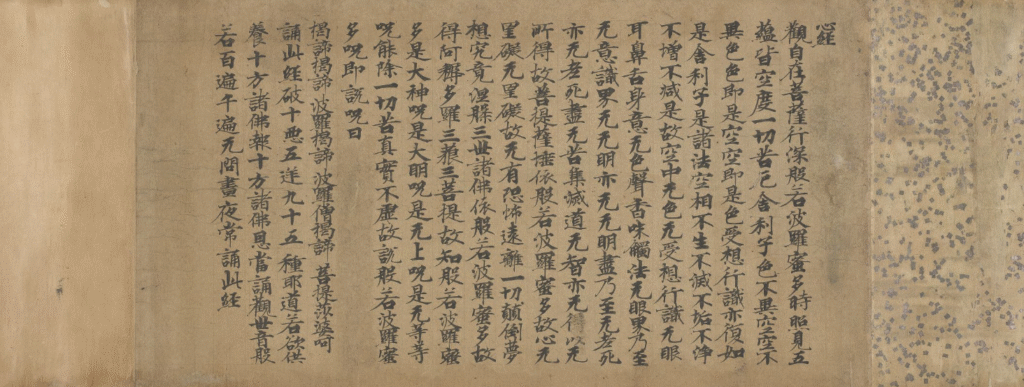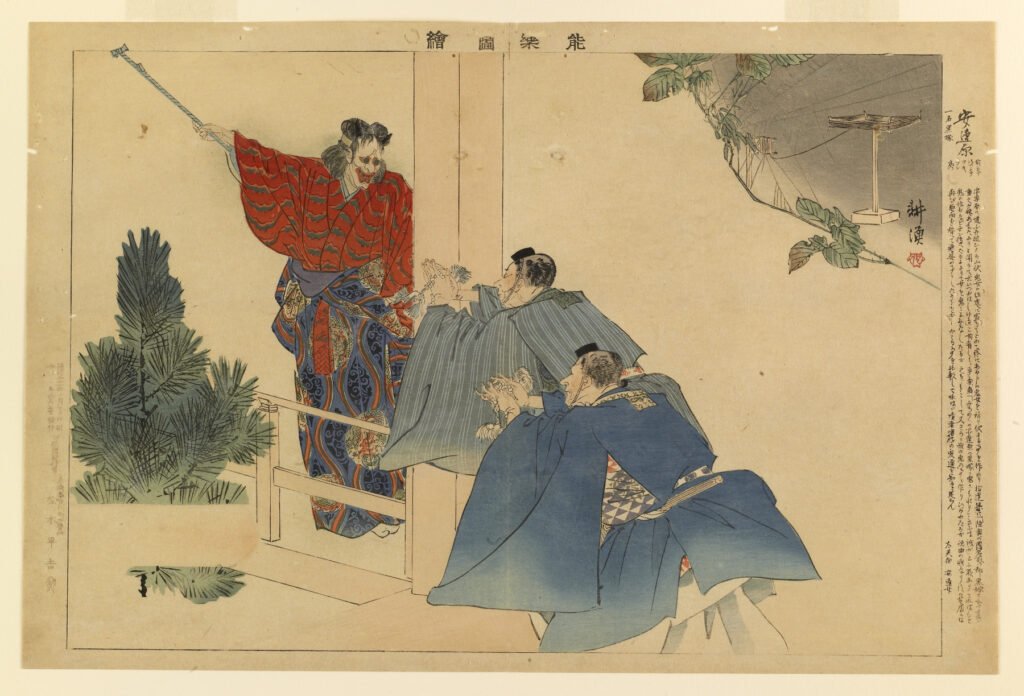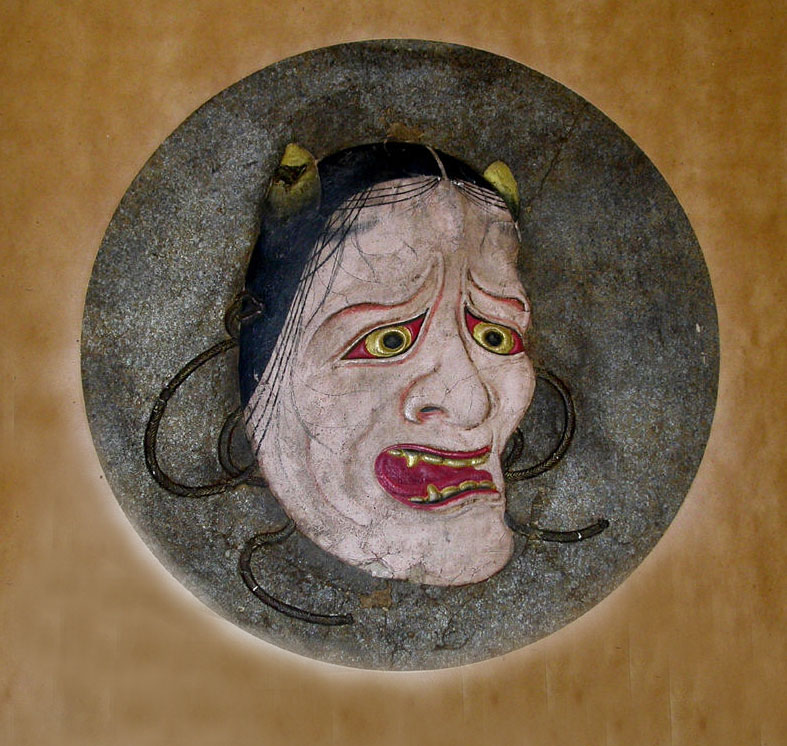What comes to mind when you hear the word “Hannya“? In recent years, tattoos featuring the Hannya mask have gained immense popularity in Western countries as an iconic Japanese design element. However, few people truly understand the complete meaning of Hannya. This Japanese term carries a fascinating duality: it represents the highest form of Buddhist wisdom while simultaneously referring to a terrifying demonic female mask used in traditional Japanese theater.
This article explores the profound meaning of Hannya in both contexts, delving into its cultural background and symbolism. By understanding the authentic meaning of Hannya, particularly as it relates to the increasingly popular tattoo designs, you’ll gain deeper insight into Japanese cultural aesthetics and philosophical thought.
The Original Meaning of Hannya: Supreme Buddhist Wisdom
Hannya as a Buddhist Term
The primary meaning of Hannya originates in Buddhist philosophy, where it represents “the wisdom of the Buddha.” Derived from the Sanskrit term “Prajñā” or Pali “Paññā,” Chinese characters were assigned to match these sounds, creating the Japanese term “Hannya” (般若).
The meaning of Hannya in Buddhism isn’t merely knowledge or ordinary wisdom, but rather the enlightenment attained through rigorous spiritual practice—specifically, the intuitive insight into the true nature of reality. Buddhist scholarship distinguishes this transcendent wisdom from conventional knowledge, positioning it as a direct perception of ultimate truth.
Distinguishing Wisdom Types
To properly understand the meaning of Hannya, one must differentiate between two Japanese terms that sound similar in English: “chie” (智慧) and “chie” (知恵). Though pronounced identically, the first refers to transcendent wisdom (the meaning of Hannya), while the second indicates practical knowledge and cleverness.
In Buddhist thought, the wisdom represented by the meaning of Hannya is universal and unchanging, perceiving the absolute truth of existence. In contrast, ordinary knowledge changes with time and circumstances. Buddhist teaching suggests that all humans are born with this Hannya wisdom but lose sight of it due to worldly attachments and desires.
The Six Perfections and Hannya
The meaning of Hannya occupies a crucial position within the “Six Paramitas” (Roku-haramitsu), the essential virtues cultivated in Mahayana Buddhism. These include:
- Dana (giving)
- Śīla (morality)
- Kṣānti (patience)
- Vīrya (diligence)
- Dhyāna (meditation)
- Prajñā (wisdom/Hannya)
Among these, the meaning of Hannya as wisdom is considered most vital, as it completes and perfects the other five practices.

The Heart Sutra: Essence of Hannya Wisdom
Significance of the Heart Sutra
Central to understanding the meaning of Hannya is the “Heart Sutra” (Hannya Shingyō), officially known as the “Prajñāpāramitā Hṛdaya Sūtra” in Sanskrit. This concise text—just 262 characters in Japanese—distills the core teachings of Mahayana Buddhism.
The Heart Sutra is widely regarded as the most succinct expression of Mahayana Buddhism’s essential teachings, read and recited worldwide. For many Japanese people, this sutra represents their most direct connection to the meaning of Hannya.
The Concept of “Emptiness” and Hannya
The Heart Sutra articulates the concept of “emptiness” (śūnyatā or “kū” in Japanese), which lies at the heart of the meaning of Hannya. This philosophical concept posits that nothing possesses a fixed, inherent essence. Rather than nihilism, this represents a positive worldview suggesting that all phenomena exist through interdependent relationships.
The famous phrase from the Heart Sutra, “Form is emptiness, emptiness is form” (色即是空、空即是色), encapsulates the profound meaning of Hannya wisdom—revealing that the apparent solidity of the physical world and the concept of emptiness are ultimately inseparable aspects of the same reality.

Princeton University Art Museum.
The Other Meaning of Hannya: The Fearsome Female Demon Mask
What is the Hannya Mask?
Parallel to its Buddhist meaning, Hannya also refers to a specific type of mask depicting a jealous female demon. Particularly in Noh theater and folk beliefs, the meaning of Hannya commonly points to this fearsome visage.
The Hannya mask features two horns protruding from the forehead, two fangs each from the upper and lower jaw, and an expression of intense rage. Noh theater scholarship suggests that the meaning of Hannya in mask form isn’t merely horror but represents a complex expression where deep sorrow and intense anger coexist.
Origins of the Mask’s Name
How did the term for supreme Buddhist wisdom come to represent a demonic female mask? Several theories explain this curious dual meaning of Hannya:
- The Mask Maker Theory: One prominent explanation suggests the name derives from “Hannya-bō,” a skilled medieval mask carver. The demon masks he created were so exceptional that his name became associated with the mask design itself.
- The Heart Sutra Connection: Another theory connects to Noh plays like “Nonomiya,” where the spirit of a woman consumed by jealousy is pacified through recitation of the Heart Sutra. This connection between the jealous female spirit and the Heart Sutra may have led to the mask being called “Hannya.”
Both theories suggest deep cultural and historical connections between the seemingly contradictory aspects of the meaning of Hannya.
Types and Symbolism of Hannya Masks
Noh theater employs several variations of Hannya masks, each with distinct meaning:
- White Hannya (Shiro-Hannya): Representing aristocratic female demons with a degree of refinement
- Red Hannya (Aka-Hannya): Symbolizing intense anger and hatred
- Black Hannya (Kuro-Hannya): Depicting base demons or ultimate grudges
- Shinji (True Snake): Portraying the final snake transformation, with snake-like features and no ears
According to Noh theater tradition, the meaning of Hannya masks encompasses the ultimate state of human passion and emotion, not merely expressing fear but revealing the complex emotional landscape of the human condition.
Distinguishing Oni and Hannya: Female Transformation Narratives
Understanding the complete meaning of Hannya requires distinguishing between general Japanese demons (oni) and the specific Hannya demon. While traditional oni masks typically represent male demons, the Hannya mask specifically portrays a female figure transformed by jealousy and resentment.
This transformative narrative forms a key element of the meaning of Hannya masks. In traditional Japanese performance arts like Noh and Kabuki, Hannya symbolizes the process of a human woman transforming into a demon and ultimately a snake due to overwhelming jealousy or resentment. This transformation narrative connects to important figures in Japanese literature, such as Lady Rokujō in “The Tale of Genji” and Kiyohime in the “Dōjōji” legend.
Noh theater tradition maintains that the meaning of Hannya encompasses both the deep passion of women and the transformation triggered by that passion, creating a dual symbolic significance.
The Meaning of Hannya in Contemporary Tattoo Art
Popularity of Hannya in Tattoo Culture
With growing global interest in traditional Japanese designs, tattoos featuring the Hannya mask have become remarkably popular worldwide. However, the meaning of Hannya in tattoo art is often misunderstood or oversimplified.
In tattoo communities, the meaning of Hannya is frequently interpreted as a “protective symbol warding off evil spirits,” which somewhat diverges from its traditional Japanese context. In traditional Japanese understanding, the Hannya mask primarily represents human passion and resentment rather than serving as a protective talisman.
Symbolic Color Variations
In tattoo art, different colors of Hannya masks carry distinct meaning:
- White Hannya: Symbolizing nobility and spiritual purity
- Red Hannya: Representing anger, passion, and vitality
- Black/Dark Hannya: Depicting deep resentment or complete transformation
Tattoo artists often utilize these color symbolisms while adapting designs to reflect clients’ personal intentions and aesthetic preferences.
Conclusion: Reconsidering the Meaning of Hannya
The meaning of Hannya encompasses both “supreme Buddhist wisdom” and the “demonic female mask” used in Japanese performing arts. This apparent contradiction actually reveals a profound connection in Japanese cultural thought.
In Buddhist philosophy, passions (bonnō) and enlightenment are seen as two sides of the same coin. Supreme wisdom (the meaning of Hannya) awaits on the other side of extreme emotions like jealousy and resentment. Noh theater tradition suggests that the resentment expressed by the Hannya mask and the wisdom of Buddhist Hannya, though seemingly opposite as passion and enlightenment, are fundamentally connected in the human mind.
In this light, the Hannya mask represents not merely a symbol of fear but suggests the human struggle with intense emotions and the possibility of transcendence beyond them. This profound symbolism elevates the meaning of Hannya beyond a horror motif to a valuable cultural heritage.
For those considering Hannya tattoos or appreciating these designs, understanding the full meaning of Hannya offers a richer perspective on this fascinating element of Japanese cultural tradition—one that continues to resonate in our contemporary world.
Note: Interpretations of the meaning of Hannya may vary across different Buddhist traditions and contexts. This article presents mainstream scholarly understanding based on historical and cultural research.
Explore more articles about Japanese Mask Design! Thank you! 🙂




